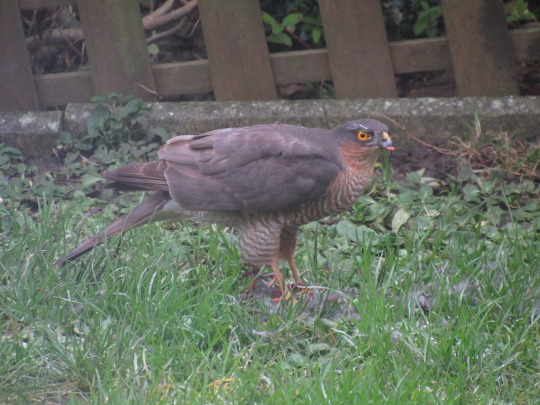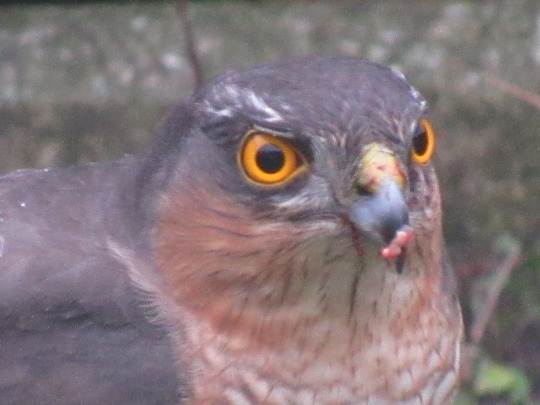#Accipiter nisus
Text
#Sperber#Greifvogel#Eurasian sparrowhawk#Accipiter nisus#Bird of Prey#Wild Life#Nature#Wild Life Germany#4th October 2023
63 notes
·
View notes
Photo
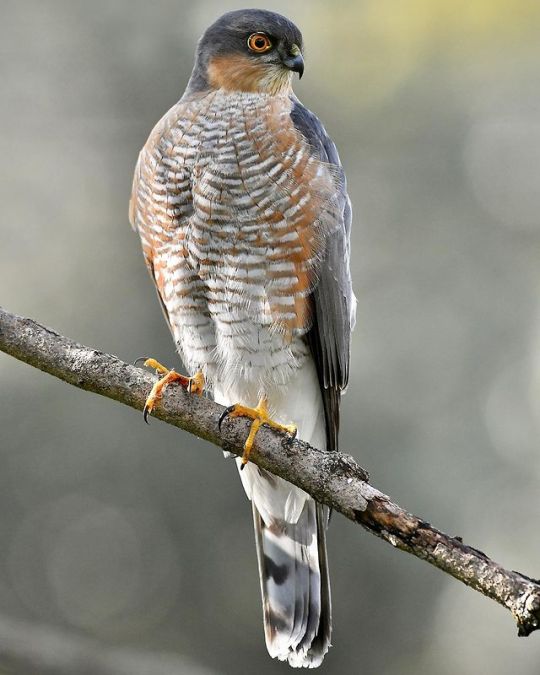
Eurasian Sparrowhawk
#eurasian sparrowhawk#sparrowhawk#northern sparrowhawk#Accipiter nisus#Accipitriformes#Accipitridae#Accipiter#bird#upl
122 notes
·
View notes
Text
شکارِ شکارچی
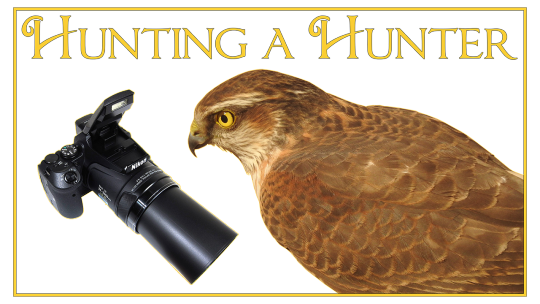
the blink of a Hunter
پلک زدن یک شکارچی

When a hunter winks at you😈
وقتی یه شکارچی بهت چشمک میزنه😈
.
.ـ.ـ.ـ.ـ.ـ.ـ.ـ.ـ.ـ.ـ.ـ.ـ.ـ.ـ.ـ.ـ.ـ.ـ.
🌟شکار رو دوس دارم نه با تفنگو یه پرنده
🌟شکار رو دوس دارم نه با ماهیو یه قلاب درنده
🌟شکار یعنی نشستن در یه گوشه
🌟کمین کردن به امید یه سوژه ، یه قصه ، یه شعرو یا یه صحنه
🌟شکار طعمش ، طعم انتظاره
🌟شکار در اصل گشتن زمــانـه
یـا کـه نـه ؟
🌟کیمیـای بیـهوده بودن در مـکـانـه
🌟شکار گاهی خودش اهل انتحاره
🌟بی طعمه در کمنده ، اون عاشق بیچاره
🌟شــکار وقتی خودش میشه شکارچی
🌟شَهکار ها رو تو انوقت میفهمی
.
#30ahchaleh#na_zzanin#ناظنین#sparrowhawk#Accipiter nisus#Falcon#Nikon#جُرَه باز#قرقی#ترلان#شاهین#نیکون
2 notes
·
View notes
Text

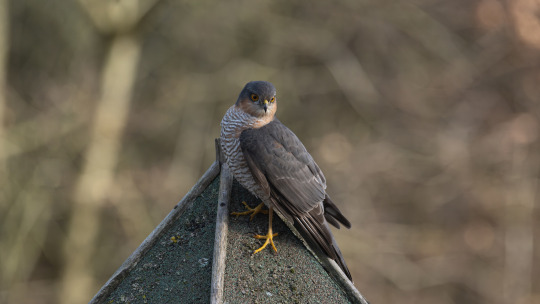
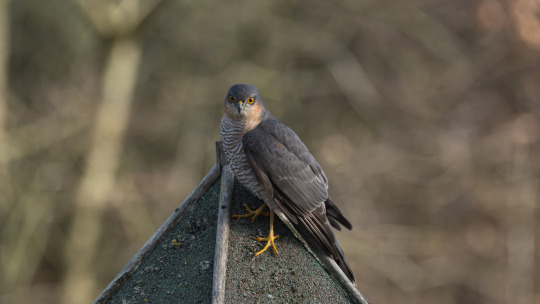
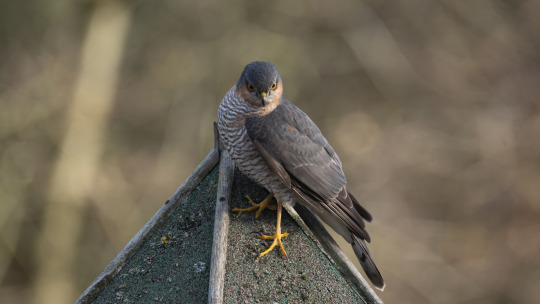
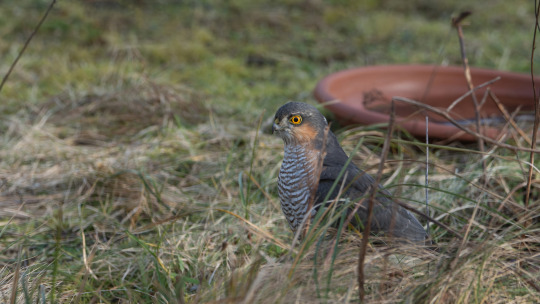
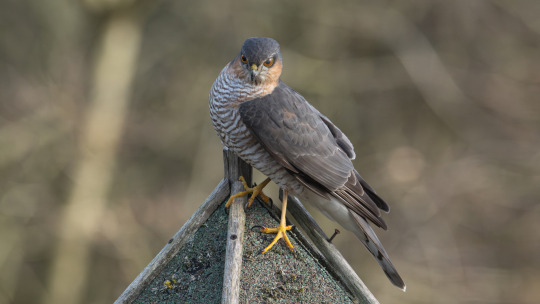
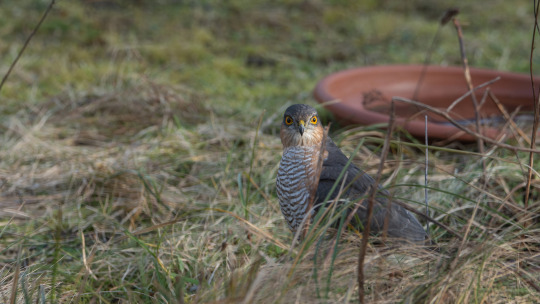
Spurvehøg (Accipiter nisus), han
Eurasian Sparrowhawk (Accipiter nisus), male
#Spurvehøg#Accipiter nisus#Accipiter#bird#fugl#aves#vinter#winter#Eurasian Sparrowhawk#Sparrowhawk#Høg#Hawk#accipitridae#Garden#Have#Topbjerg#Fouragerende#Foraging#Rovfugl#Raptor
2 notes
·
View notes
Photo

A new variant has been added!
Eurasian Sparrowhawk (Accipiter nisus)
© tomodachibirb
It hatches from broad, brownish, bulky, female, golden, juvenile, long, male, much, northern, quick, rusty, small, striped, urban, wooded, woodland, and yellow eggs.
squawkoverflow - the ultimate bird collecting game
🥚 hatch ❤️ collect 🤝 connect
2 notes
·
View notes
Photo

Јастреб врапчар #јастреб #врапчар #accipiter #nisus #eurasian #sparrowhawk #јастребглувчар #accipiternisus #euroasiansparrowhawk #nature #birdphotography #bird #birdwatching #birds #birding #македонија #macedonia #скопје #птици #птичарење #инстаграмџии (at Езеро Мавровица) https://www.instagram.com/p/CljxayYLjtf/?igshid=NGJjMDIxMWI=
#јастреб#врапчар#accipiter#nisus#eurasian#sparrowhawk#јастребглувчар#accipiternisus#euroasiansparrowhawk#nature#birdphotography#bird#birdwatching#birds#birding#македонија#macedonia#скопје#птици#птичарење#инстаграмџии
1 note
·
View note
Text

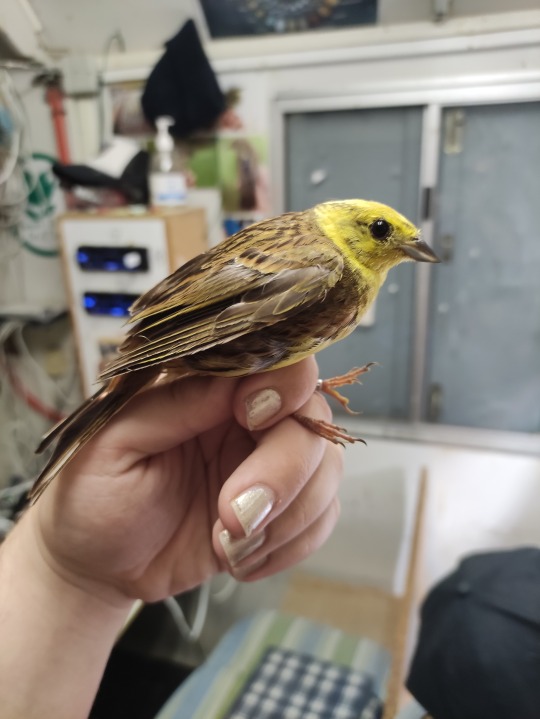




Here is another list of birds I caught in Luxembourg last august.
- Dunnock (Prunella modularis)
- Yellowhammer (Emberiza citrinella)
- An outraged Eurasian sparrowhawk (Accipiter nisus)
- Eurasian blackcap (Sylvia atricapilla)
- Short-toed treecreeper (Certhia brachydactyla)
- Sand martin (Riparia riparia)
Hope you enjoy !
84 notes
·
View notes
Text
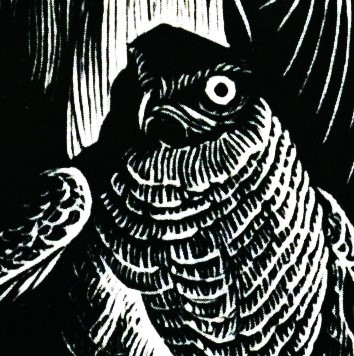


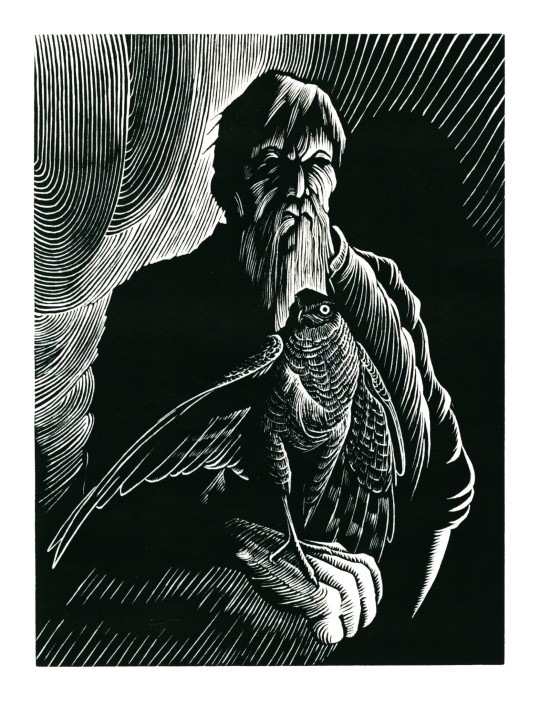
Another Wood-engraved Feathursday
JOHN MCWILLIAMS
Now here's a couple of intense fellows! The print is entitled Sparrow Hawk by South Carolina artist and engraver John McWilliams (b. 1941). The print was selected for inclusion in the Fourth Triennial Exhibition 2020-2022 of the American wood engravers society, the Wood Engravers’ Network (WEN), and this image is from the catalog for that traveling show.
McWilliams's work is inspired by Lowlands flora and fauna, so it seems a little odd that he would choose as his subject the Eurasian Sparrow Hawk (Accipiter nisus) rather than the American Kestrel (Falco sparverius), which is so common to his native habitat. Both species are used in falconry. Nevertheless, both offer something for the engraver, and we enjoy how McWilliams's Sparrow Hawk looks like it's about to take a bow.
John McWilliams received his BFA and MFA from the Rhode Island School of Design and is Professor/Director Emeritus of Georgia State University Ernest G. Welch School of Art and Design. He has received numerous awards, including the Guggenheim Foundation Fellowship and the National Endowment for the Arts Fellowship in photography. Today he maintains a studio in McClellanville, S.C. He counts as his inspirations the work of Albrecht Dürer and the German expressionists, the illustrations of Rockwell Kent, and the graphic novels of Lynd Ward and Frans Masereel. Of working in wood, he writes:
Woodcuts and wood engravings . . . have held much fascination for me. . . . The process of developing an image into a woodcut or wood engraving gives structure to my life. . . . It is such sweet irony that, although the act of creating gives my life structure, it nevertheless produces an enigma, a puzzle that others may interpret through their own lives. There are no easy answers. Such is life.
View more Feathursday posts.
View other posts with engravings from the WEN Fourth Triennial Exhibition.
View more engravings by members of the Wood Engraver’s Network.
View more posts with wood engravings!
#Feathursday#wood engravings#wood engravers#John McWilliams#Eurasian Sparrow Hawk#George Dirolf#Wood Engravers' Network#WEN#WEN Fourth Triennial Exhibition#exhibitions#exhibition catalogs#birds#birbs!
29 notes
·
View notes
Note
Oooo now you’re really getting me into Clanmew. What are the names for birds and bird species in Clanmew?
The simple word for "Bird" evolved from Old Tribemew, at the Dawn of the Clans. A "Bird" is any two-winged flying animal with bones.
Bird (and bats) = Hafefyl
The major types of birds that the Clan cats recognize are as follows;
Raptor = Yassga
A large, dangerous bird. Any avian perceived to pose a threat is in this category, including swans, ravens, and herons. Not just birds of prey.
Fowl = Eyawoon
Large prey birds, the same level of danger as any other large quarry. Ducks, pheasants, gulls, cormorants, a chicken or peacock would also be in this category.
Game = Biyaw
These are the birds that are eaten regularly, without much other consideration. It's where most of the 'odd' birds that don't fit other categories go. Pigeons, sparrows, quails.
Fancy = Pyrrya
Any bird that would be a shameful thing to kill. That usually means songbirds with pleasing songs, but also colorful ones with pleasing patterns and behaviors, and even bats as they bring sickness when eaten.
Examples of "Yassga";
Golden Eagle (Aquila chrysaetos) = Nyieu
A species only encountered in the Tribe mountain, before re-contact it was considered a legendary animal. The most dangerous flying species, capable of attacking small deer.
Sparrow Hawk (Accipiter nisus) = Yi'i
When hawks are being noted for their speed, it's this species. They primarily hunt other birds, but not cats.
Red Kite (Milvus milvus) = Eeao
This is the species that is both large and bold enough to take kittens. The vast majority of the time when hawks are mentioned in a dangerous context, it is a kite. Goshawks are not as numerous in this area as canon implies.
Kestrel (Falco tinnunculus) = Ipip
Acrobatic, agile bird able to seemingly 'hover' in the air.
Marsh Harrier (Circus aeruginosus) = Yeepi
Skilled attentive hunters that tend to hunt small mammals in open areas, especially wetlands. RiverClan and ShadowClan see these a lot.
Merlin (Falco columbarius) = Mweelili
A small, generalist hunter that likes low-density areas like moorland, sparse woods, and brush. Known for being friendly with Harriers and eating just about anything.
Osprey (Pandion haliaetus) = Pyip
Not actually a dangerous species; but the perception of danger will make Clan cats avoid this creature. Most commonly found by the sea.
Swan (Cygnus olor) = Hchom
Large and quiet, these birds are so large they can drown a foolish warrior or break a bone.
Raven (Corvus corax) = Nyok
A raven is considered a very dangerous bird not only for its size and ferocious beak, but because of how vengeful an unkindness can be. They remember Clan cats and seemingly mess with them on purpose.
Gray Heron (Ardea cinerea) = Krekek
With their habit of spearing, bludgeoning, and even brutally drowning their prey, herons are feared and avoided. There are stories of herons picking off wayward kittens, but it's unknown if it's true or just a tale to stop them from wandering.
Eagle owl (Bubo bubo) = Huo
The biggest, largest, most dangerous owl. Cats are a desired prey. No other owl will attack an adult warrior, and eagle owls are most often found in ThunderClan territory where there's thick forest and a nearby rocky cliff.
Tawny owl (Strix aluco) = Hrrua'u
A loud, sonorous owl. Known best for being the species roosting in the old Owl Tree.
Barn owl (Tyto alba) = Weear
This owl does not hoot, it screeches.
Examples of "Eyawoon";
Duck (Anas platyrhynchos) = Kwek
There are several species of ducks they encounter occasionally-- but this one, the mallard duck, is the most common. ThunderClan liked to try and hunt them when they had Sunningrocks, sometimes inflaming tensions between clans.
Ring-necked Pheasant (Phasianus colchicus) = Rauqa
Named for the territorial cry of a male pheasant, the most impressive prize that a ThunderClan warrior can catch.
Black-headed Gull (Chroicocephalus ridibundus) = Rewp
Not just a seabird; found further in-land and will make do with just about any body of water. This is a species regularly found and hunted at Sanctuary Lake, and also the type that Gullswoop is named for.
Herring Gull (Larus argentatus) = Eeyar
The Clan cats haven't been doing salt patrols long enough yet to know that this is absolutely not an Eyawoon, but in fact, a Yassga. Sandwhich-stealing BASTARDS. They're the ones with the gray back, yellow beak, little red mark on the lip, and feral Grinch-looking eyes. If you live by the ocean you know. (There is another species that looks similar but Clan cats think they are the same animal)
Cormorant (Phalacrocorax carbo) = Waer
A large, black fishing bird that dives underwater to catch its prey. Revered by RiverClan.
Carrion crow (Corvus corone) = Rawk
This is the species being referred to when "crowfood" is mentioned. Rawkwoo.
Magpie (Pica pica) = Ke'ek
Glossy, beautiful blue, black, and white bird. Very intelligent and a difficult catch; like crows and ravens they are smart enough to have a concept of social learning.
Egret (Egretta garzetta) = Bwawa
Though they have many of the same 'brutal' behaviors as herons, they're too small to cause damage and hence are sorted into 'eyawoon'
There is currently no word for Chicken but Ravenpaw is probably using the term Barley likes best. Except the rooster which he immediately named "Urkaroona."
Examples of "Biyaw";
Wood Pigeon (Columba palumbus) = Huwoohoo
Big, fat, common, a popular meal bird.
Dove (Columba livia) = Hrru
Funfact: In TPB, there is a moment where Fireheart scolds Cloudpaw for calling a pigeon a 'dove.' In English, pigeons and doves are synonyms, but in Clanmew, Cloudtail had killed a Huwoohoo, but called it a Hrru.
Sparrow (Passer domesticus and Passer montanus) = Qee
Though there's a difference in plumage between these species, Clan cats think they are the same species because their songs are nearly identical. Passer montanus (Eurasian Tree Sparrow) is just considered what a sparrow looks like when it lives deep in the woods.
Quail (Coturnix coturnix) = Wipiwik
A round little ground bird that's very fast.
Jackdaw (Coloeus monedula) = Miaw
A black-and gray bird with a mewling call.
Song Thrush (Turdus philomelos) = Errari
This bird has many songs, which is taken by Clan cats as intentionally trying to hide its true name. They may even be changing their appearances to look like a Mistle Thrush; clearly they're something much more intelligent, since they use stones to smash open snail shells.
Mistle Thrush (Turdus viscivorus) = Charrech
Much larger than a Song Thrush. Brave, one of the few birds that sings even in terrible weather, but named for the angry sound it makes when it's guarding berry bushes in winter.
Fieldfare (Turdus pilaris) = Apapach
A very important winter prey bird which travels in large flocks. Bullied by Mistle Thrushes for good food sources.
Redwing (Turdus iliacus) = Eean
Similar to a fieldfare, but smaller and usually in tinier groups. The call is very different, so these birds are not usually confused by Clan cats unless they're seen first. Apapach are the preferred prey of the two.
Blackbird (Turdus merula) = Oohee
Males are blue-black with a yellow ring around the eye, and females are a ruddy dappled brown.
Eurasian jay (Garrulus glandarius) = Arkr
Loud, aggressive medium-sized birds. Pale with blue wings.
Examples of "Pyrrya"
Bat (4 SPECIES) = Fip
This refers to the sound of their wings mid-flight. No species of bat is consumed. If eaten they can bring horrible sickness, seen as a punishment for killing an holy night-loving animal with such a beautiful voice and great hunting skill. Clan cats are able to hear bat songs out of range of human hearing!
Pipistrelle (Pipistrellus pipistrellus) = Popep
A very small, common bat species that usually eats mosquitoes and midges in wet areas.
Soprano Pipistrelle (Pipistrellus pygmaeus) = Ipi'ip
Humans can barely tell the difference between these two, but Clan cats recognize that the song of a Soprano is much faster, higher-pitched, and absolutely sonorous. Considered the night version of a wren and held in high esteem.
Long-eared Brown Bat (Plecotus auritus) = Fepfr
A very quiet, low-flying bat with a habit for doing some ground-hunting. This is usually the first bat that an apprentice sees instead of hears, and the one which is used to teach them to not hunt bats. It has a very modest song, which Clan cats explain as mourning for every bat accidentally killed and discarded. Rarely called the "Fip Hhass;" the Whisper Bat.
Noctule (Nyctalus noctula) = Shi'po
The largest bat, has huge teeth and a broad face. Females both migrate and hibernate, but males stay awake all year and sing with a very distinctive tune hard to put into a word.
Songbird (SEVERAL SPECIES) = Pigu
Note: Most songbirds are down here in this category, but some, like Song Thrushes, are only here conditionally. Usually if there's enough food to go around.
Wren (Troglodytes troglodytes) = Pi'ie
The song of this tiny bird is so fast and beautiful that Clan cats have a hard time putting it into words; these birds are not killed except by fiends and rogues.
Robin (Erithacus rubecula) = Birri
This is a small, gray-and-brown bird with a bright orange face. They're not very filling, pretty, and sing a delightful song, so like the other species in this category they aren't taken unless there's a serious need.
Woodcock (Scolopax rusticola) = Mweep
Though large and delicious, these birds are so enjoyed that killing them is dishonorable without approval. They're the only bird that can fly away with its young, it dances and puts on air shows as mating rituals, and they're quite rare.
There are more species than this found in the area but this should be more than enough for now. Here's the most significant "bird" species they experience on a regular basis!
67 notes
·
View notes
Text
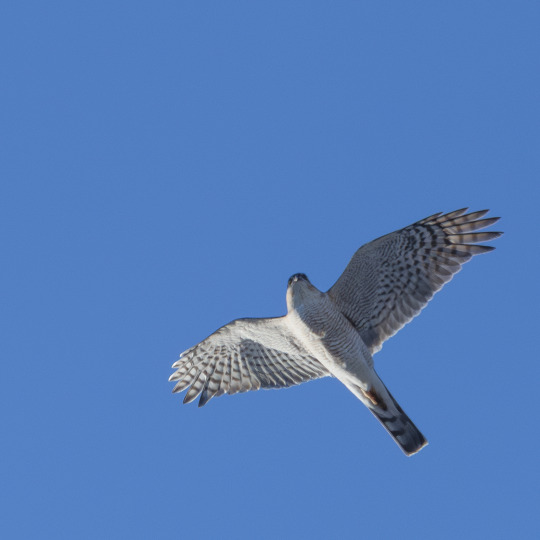
The Japanese name of Eurasian sparrowhawk, Accipiter nisus, is derived from the word "fast hawk," and it certainly has a very fast and beautiful flight.
This male seems to settle down around my house this winter. Although I do not see him very often, he appears from time to time out of nowhere, causing a commotion among the surrounding birds, and then quickly disappears again.
ハイタカの和名は「疾き鷹」が語源だそうだが、確かに直線的に空を切り裂く飛翔姿は美しい。
この冬、家の周辺にこのオス個体が居着いているよう。時折どこからともなく現れて、周囲の鳥たちを騒がせ、あっという間にまたどこかへ去っていく。
Nagano Pref. 長野県 2024-03-02
#bird#animal#wildlife#nature#naturephoto#natorephotography#winter#march#japan#nagano#karuizawa#hawk#sparrowhawk#Accipiter#Accipitridae#Accipitriformes
12 notes
·
View notes
Photo

Eurasian Sparrowhawk
78 notes
·
View notes
Text

Some of my bird skulls
Greylag Goose (Anser anser), Eurasian Sparrowhawk (Accipiter nisus), Eurasian Tree Sparrow (Passer montanus),Black Redstart (Phoenicurus ochruros)
#vulture culture#birds#eurasian tree sparrow#greylag goose#eurasian sparrow#black redstart#tw bones#tw animal bones#tw skull#animal bones#animal skull#am i shadowbanned?#or why is this not showing??
16 notes
·
View notes
Photo
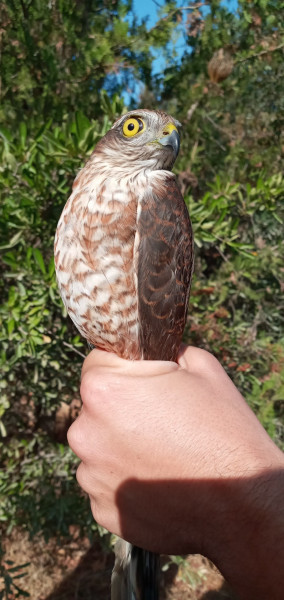
A new variant has been added!
Eurasian Sparrowhawk (Accipiter nisus)
© tomodachibirb
It hatches from broad, brownish, bulky, female, golden, juvenile, long, male, much, northern, quick, rusty, small, striped, urban, wooded, woodland, and yellow eggs.
squawkoverflow - the ultimate bird collecting game
🥚 hatch ❤️ collect 🤝 connect
1 note
·
View note
Text

[https://www.inaturalist.org/observations/9284644]
Eurasian Sparrowhawk || Accipiter nisus
Observed in Italy
#ornithology#hawk#birds#birds of prey#raptor#nature#wildlife#photography#air beast#who cooks for queue? who cooks for queue all?
6 notes
·
View notes
Text
WILDLIFE - THE SPARROWHAWK
Sparrowhawk – Accipiter nisus
The Sparrowhawk is a relatively small birds of prey adapted for hunting smaller birds in confined spaces like dense woodland, so gardens are ideal hunting grounds for them. Adult male sparrowhawks have bluish-grey back and wings and orangey-brown bars on their chest and belly. Females and young birds have brown back and wings, and brown bars underneath. Sparrowhawks…

View On WordPress
4 notes
·
View notes
